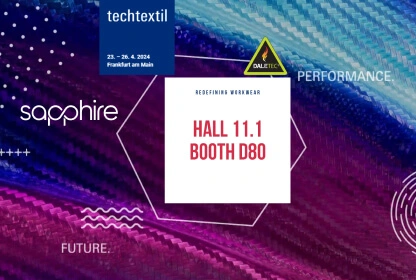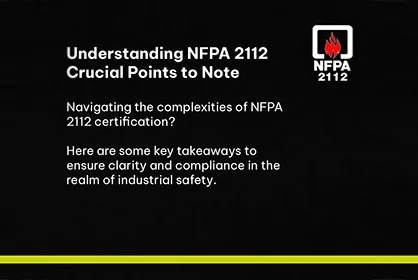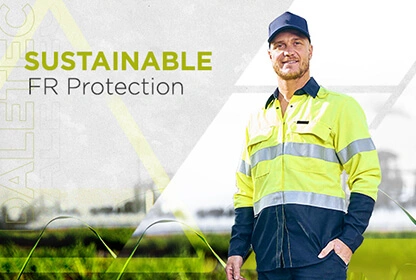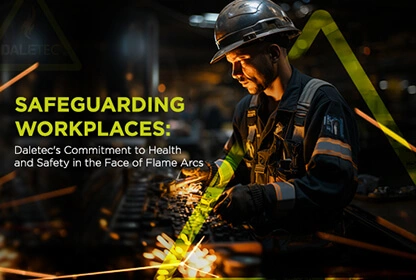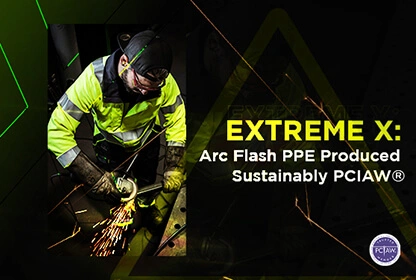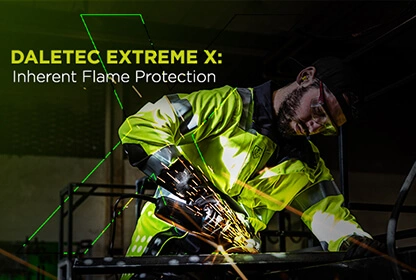August 6, 2019
News & Media
Limiting Oxygen Index Relevance for your choice of PPE?
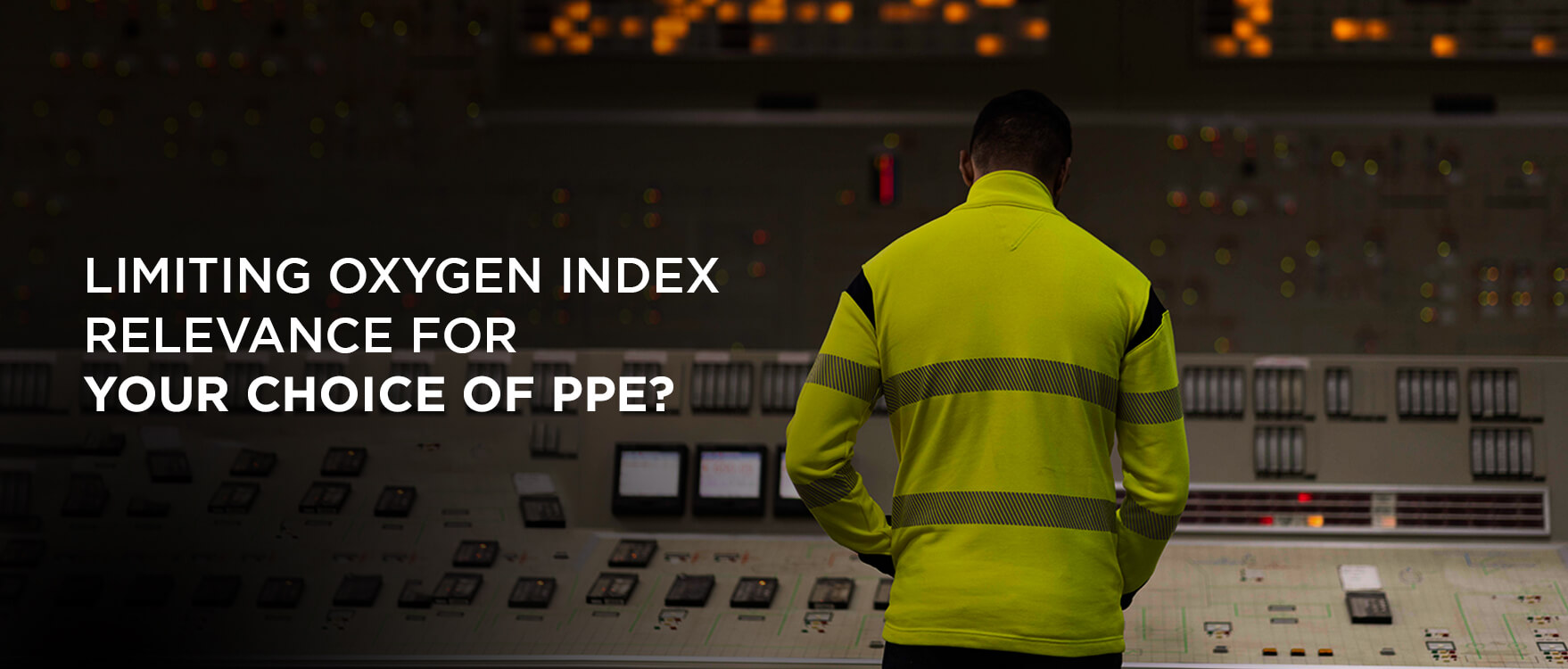
Lately, LOI has come up in many discussions with our customers. The essence of our dealings is that they want a LOI as high as possible for fire retardant fabrics, but is this a feasible measurement of safety? And what is LOI?
Here is a brief explanation of LOI and its relevance to flame retardant / fire resistant fabrics.
LOI is a technical and scientific measuring method that defines the flammability. It is the minimum concentration of oxygen, expressed as a percentage that will support combustion of a polymer/fiber/textile. It is measured by passing a mixture of oxygen and nitrogen over a burning specimen and reducing the oxygen level until a critical level is reached.
Limiting Oxygen Index (LOI) is the parameter most frequently used to characterize the improvements in fire retardancy of protective fabrics.
LOI indicates the minimum oxygen concentration in the test atmosphere to support ignition and flaming combustion of the material. The overall LOI testing method, including specimen preparation and measurement, is designated in international standards such as ASTM D2863, ISO 4589-2, and NES 714.
The method relates to the fact that the earth’s atmosphere contains 21% oxygen and thereby roughly defines flame retardant fabrics and fibers according to this grading.
(there will be a slight deviation in these percentages as per different literature sources)
LOI
>25% Flame retardant fabric – flame resistant fabric (not burnableà self-extinguishing material)
22-25% Slow burning, hard to ignite (may burn slowly could also self-extinguish)
18-22% Burnable, flammable (burns and will not self-extinguish)
<18% Easy to ignite, easily flammable (burns and the flame is spreading easily/rapidly)
LOI can give you an indication about how good or bad the flame retardant fabric is. However, it is not a recognized standard for the approval or certification of textiles or PPE and is not to be linked to the PPE standards in ISO, EN, ASTM, or NFPA.
LOI is generally used for characterizing fibers, polymers, textiles, and other materials.
It can be a big help in the research and development of blended materials for PPE textiles.
As an example it can give you a good indication on how to blend cotton (LOI approx. 18-20%) and one type of modacrylic1 (LOI approx. 30-32) – so you can roughly calculate the blend ratio about 50/50 so the blend of the flame retardant fabric ends up in the LOI range of 26-28 %.
However, this is no definitive tool for fiber or material blending. As an example, if we use a 50/50 blend of cotton (LOI 18-20%) and another type of modacrylic2 (modified acrylic) with an LOI of 44-45% the fabric might burn.
The difference here is that the modacrylic1 is of a type that contains antimony and big amounts of Nitrogen. The Nitrogen that is released in the burning of the modacrylic will help smother the flame and the antimony will react with hydrogen (or other free radicals à burnable or reactive gasses) and form water and other substances that will cool down the flame temperature. This will together extinguish the fire/flame also for the cotton part of the blend.
The modacrylic2 does not contain Nitrogen or antimony and therefore does not release any gasses that will help extinguish the fire/flame. The fiber property is that it needs an extreme high temperature before it burns, and this extremely high temperature is not reachable in the flame, but the cotton is burnable so this will keep burning in the blend even though the modacrylic 2 in the blend is not burning.
This way the fabric will not self-extinguish.
LOI measurement does not tell you if the fabric has an after-flame or an after-glow after the fabric has self-extinguished. There is a demand in all standards such as EN ISO 11611, EN ISO 11612, ASTM and NFPA 2112.
LOI measurement does not tell you if the fabric is melting, dripping or even if it is shrinking, or if a hole is formed when exposed to heat or flame.
There is a demand/regulation of this in both EN ISO norms (11611 and 11612), ASTM and NFPA 2112.
LOI measurement does not tell you if the fabric is melting or if a hole is formed if the fabric is exposed to an electric arc and its radiation energy.
There is a demand in of this test in IEC 61482, EN ISO 11611 and 11612, and ASTM regarding this.
LOI measurement does not tell you the behavior of the fabric regarding contact heat, radiant heat, nor convective heat. There is a demand in EN ISO 11612, ASTM and NFPA 2112 regarding this.
LOI measurement does not tell you the behavior of the fabric regarding liquid metal or metal droplets from welding. There is a demand in EN ISO 11612 regarding this.
The question why LOI has become an important concept or term for some end-users is really difficult to understand, as it gives no extra safety and it is not proven that a fabric with a LOI of 45% is safer than a fabric with a LOI of 28%
LOI is practically the only flammability test that can be performed on fibers and chemistry, but as we tried to explain in this article it really doesn’t make much sense talking about it with relations to flame retardant textiles and flame retardant workwear.
PPE protection is depending on many factors: type of the fabric, fiber blend, and flame retardant chemistry, construction/weave of the fabric, thickness, volume, surface, quality and design of the fabric/garment.
Daletec strongly recommends to all customers and end users to always follow the protection norms (ISO, EN, ASTM, and NFPA) for fabric and protective clothing.
These standards and norms that have been used for decades and they are under continuous revisions and improvements to give the best and most updated safety for your company and your PPE users.


